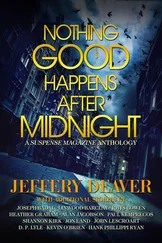The garbage bags and boxes, Sachs realized, must have held more of the Locksmith’s favorite substance: gasoline.
Just as she started down, she could smell the sweet aroma.
A trip wire, maybe on the door, would have started a timer, which he’d set to make sure that as many police as possible were inside before it activated a detonator to ignite the gas.
“Out, out!” She then transmitted into her radio, “We have fire. Need FD now.”
She helped up Sanchez, who appeared to have broken or twisted her ankle when she fell escaping the explosive flames.
The orange and yellow tornado, accompanied by oily black smoke, roiled higher into the old structure.
Choking, Sachs helped Sanchez to the door, where another officer guided her toward the ambulance.
Sachs turned back, swinging her flashlight back and forth through the gathering flames and smoke, to make sure no one else was left inside. She didn’t see anyone but counted heads outside; the entry teams were accounted for and there were no injuries other than Sanchez’s.
Stepping back inside she examined the room — to the extent she could, given the smoke. The floor was solid oak and it would take some time to burn through it. She started toward the Locksmith’s workbench, hoping for some — for any — evidence, thinking of the key trace that Lyle Spencer had snagged before that fire had destroyed the Sandleman Building.
She got halfway to the workstation before she began to feel lightheaded from the fumes.
Forgot about that little aspect of fires...
The oxygen thing.
She turned and stumbled through the door, sucking in masses of air and spitting out the smoke residue.
The firefighters arrived and began running hoses.
Just as well she left. Maybe the floor was holding, but the flames had risen through the walls and the entire main floor was now engulfed in a raging blaze. How much gas had he used? Gallons upon gallons.
The loss of clues to the man’s identity was one consequence of the trap.
But it meant something else too. The Locksmith wouldn’t have set it while he was still here. With the arrest of Joanna and Kemp, he’d know it was only a matter of time before they gave up his name in exchange for a plea deal.
Which meant that he’d undoubtedly bundled up his most important possessions, cleaned out his bank account and was presently a hundred miles from the city by now, and still on the run.
He had been as efficient at destroying evidence as he had been at avoiding leaving it at the scenes.
In the parlor of his town house, Lincoln Rhyme was looking at the photos Sachs had taken of the gutted Sebastiano Bakery Supply Company. He noted too that the neighboring structures were destroyed as well.
“Was it gasoline, like at the other site?”
“Yes,” Sachs replied. She’d taken a lengthy shower, but the lavender scent from her shampoo was laced with the aroma of smoke from burnt wood.
“The building wasn’t stable — the floors — but I could stand in the doorway and get some shots.”
“All those are locks?” Rhyme nodded to the screen, noting the scores of scorched devices. “Quite a collection.”
“You’re thinking of the Watchmaker again.”
He smiled briefly. He had been. The “nemesis” owned hundreds of timepieces.
“They’re cut from the same cloth. Intelligent. Tacticians. Dark artists, you could say. And both obsessed with mechanical devices. Very retro.”
“You’re sounding poetic today.”
His focus returned to the case. “And the reporter’s alibi checks out? What’s his name again?”
“Sheldon Gibbons. It does. Neighbors and his wife and — more important — phone records and security cams confirm it. Funny. He looked the sleaziest but turned out to be the most authentic journalist of the bunch. He’s writing an exposé on Joanna.”
“What’s the rookie’s status?”
“Finishing up soon.”
Pulaski was walking the grid down at Joanna’s apartment in Battery Park City and running her yacht too. They had no way of knowing when the Locksmith had been there last — a week or two, possibly. If he’d been there at all. There was little chance that the pair had committed to paper or bytes any identifying information about the Locksmith, and they would have communicated on burner phones. Rhyme had hoped for some trace evidence, at least.
This did not seem likely, though. Pulaski had reported it was obvious that an energetic cleaning crew had descended on the sumptuous living space not long ago. Whether this was for the purpose of eradicating any evidentiary connection between herself and the Locksmith, or simply Joanna’s fastidious ways, the end result was the same.
In the sterile portion of the lab Mel Cooper was finishing up with the evidence collected at the apartment of Averell Whittaker, though Rhyme guessed there would be little helpful. The Locksmith himself would never have been to the abode.
And this was the case, Cooper reported.
Rhyme said, “Get on home. But make an appearance at the lab in Queens. Remember we’re renegade.”
Beaufort, Potter and Mayor Harrison still had a price on Rhyme’s head and that of anyone working with him.
Cooper stepped out of the lab, and tossed out his gloves, cap and booties, then dropped the white cotton lab jacket into a wicker bin, for Thom to launder. He stepped into the first-floor bathroom, where he scrubbed up. Then, calling “Bye,” he left via the back door.
A man’s voice called from the lobby of the town house. “We’re ready for you, Detective.”
Rhyme called, “Go get him, Sachs.”
She gave a brief laugh and walked into the front hallway of the town house.
Rhyme piloted his chair to the parlor doorway.
The film crew — three young men, in jeans and work shirts or T’s — had set up a fancy video camera on a substantial tripod. One handed her a lapel mike and she pinned it to the front of her blouse.
A small monitor sat on a portable metal table. On this was being broadcast a press conference down at One Police Plaza. The point man was Commanding Officer Brett Evans — the supporter of Rhyme during the Buryak-acquittal incident. He was talking about the arrest of Joanna Whittaker and her fiancé, Martin Kemp, in the attempted murder of their uncle, as well as for the kidnapping of Kitt, whom they were going to frame for the death.
Sachs said to the lead cameraman, “You going to do the five, four, three thing with your fingers?”
The producer smiled. “You want me to?”
“Sure.”
She took a deep breath. Amelia Sachs was a woman who had driven cars well over 150 miles an hour, who had been shot at, and on more than one occasion faced burial alive — her greatest fear — without a runaway pulse. And she’d been a fashion model for some of the biggest clothing and makeup companies in the world — but those assignments didn’t involve speaking lines; she simply had to remain still and look sultry. Now, Rhyme thought she was nervous... and irritated with herself for feeling that way.
Rhyme smiled at her. She gave a faint laugh and turned back, to stare down the camera.
“Okay, coming up.”
On the screen Evans was saying, “And we’d like to enlist the aid of everyone in the tri-state area to find this dangerous criminal. I’ve asked one of our detectives to give you a description of the Locksmith and some other information. If you see anyone who you think might be him, call nine one one immediately. And do not, I repeat, do not attempt to apprehend him on your own. Now to Detective Amelia Sachs, NYPD.”
The monitor went silent, the red light came on, and the finger-counting engineer did his thing.
“Good evening.” Sachs didn’t have a script but didn’t need one. She stood beside a whiteboard on which Mel Cooper, who had fine handwriting, had penned the bullet-point descriptors of the Locksmith. She recited them now. His sex, his build, his shoe size, his MO, his obsession with locks, his likely interest in lock-picking conventions, his connection to the Sebastiano Bakery Supply building on Argyle Street. He’d driven an Audi A6 recently, and he’d been known to visit certain locations — the sites of the recent intrusions and the Sandleman Building.
Читать дальше
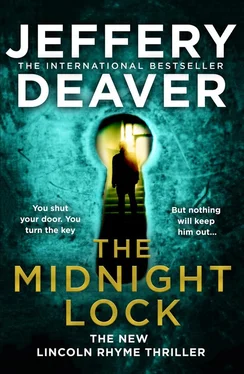
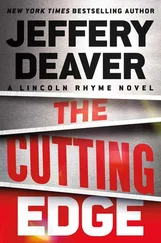





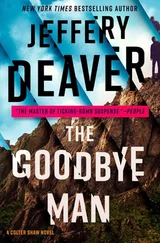
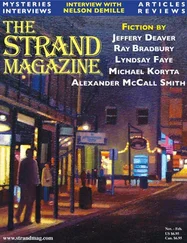
![Джеффри Дивер - Where the Evidence Lies [A Lincoln Rhyme Short Story]](/books/403782/dzheffri-diver-where-the-evidence-lies-a-lincoln-r-thumb.webp)


